How to Hire a Great Sales Development Representative (SDR)

- October 3, 2022
Remember buying your first car?
From the struggle without it to the burning desire, the cost/benefit analysis, the research, the necessary criteria, the back-and-forthing, to finally, the new car smell.
Now, you're in the market for an SDR (sales development representative). And it's much the same. Just don't try sniffing your new hire to the sales team.
But how should project managers and HR execs actually go about hiring a great sales development representative?
At Myphoner, we’ll talk about everything you need to know about it in this article (and include a full job description template to get you started). Ready? Let's go.
Why your sales team needs an SDR
If you’re asking yourself_what makes a good sales development representative?_The simple answer is perseverance. An SDR should_relish_in securing a lead's attention and_pride_themselves on making first contact.
SDRs use all the tools available to them to connect, ranging from cold calling and LinkedIn messages to emails and voicemails. They won’t sit back and wait for leads to come to them. They create their sales opportunities.
If you weren't already in the market for a sales development representative, you might be after this section. Great sales development representatives come with many perks:
- They are always available. They do not have their own clients to manage, and they can dedicate themselves entirely to generating new business for the company without being distracted by other responsibilities.
- Their skills are scalable, so if you find someone great, they can grow with your business as it expands! It's easier to train them than other sales hires since they are generalists.
- They are resourceful. They don't need you to hold their hand and tell them what to do every step of the way. They will learn about your customers, your product and provide input on how your marketing efforts can be optimized for more efficient lead generation.
So if you’re a start-up or are planning on growing your business, an SDR is an essentialpiece of the puzzle.
With specific teams handling new leads, your sales pipeline isnot only fast, it’s efficient as well. You also unburden your sales executives from dead-end leads that could take up valuable time and affect productivity.
What are an SDR's responsibilities?
SDRs play an integral part in thesales operations lifecycle. The sales cycle begins with your marketing team relaying info to their sales development reps, who then build relationships with their leads. Next, sales reps take over when a purchase is ready to be made.
Your future sales development rep will be responsible for your company's outbound prospecting. So that means reaching out to cold prospects and guiding them through the sales funnel to be long-term paying clients one day.
While systems such as a power dialer make closing deals quick and easy, sales development representatives are not so fortunate. SDRs must focus on contacting prospects via critical sales data and customer research, or they risk falling at the first hurdle. And with SDRs making up to 70 calls a day, it’s no surprise their typical day is nonstop. A typical sales rep's day-to-day comprises of:
- Researching, identifying, cold calling and qualifying new prospects
- Crafting compelling emails to contact these targets for the first time
- Building rapport with prospects, learning about their needs and desires
- Suggesting company-offered solutions to tackle their problems
- Dynamically seeking new business opportunities for the company
- Bridging the gap between prospects and sales executives/managers
The above process must be repeated several times a day to meet daily quotas. Sounds difficult? It is. But that's why you're hiring an SDR. Now, let's talk about what even makes winning sales reps—so you know what to look out for when hiring a sales development representative.
What skills should you look for in an SDR?
Sales development representatives aren’t born. They’re made. To be a successful sales development representative, candidates need an array of talents not commonly found in a nine-to-five role. Let’s look at the most valuable skills every SDR should possess.
Seasoned industry knowledge.
Not with salt and pepper. But years and education. Prospects want to be pitched by reps that understand what they do in and out. Good SDRs can provide an in-depth understanding of the prospect's problems during calls, suggesting tailored solutions for targeted clients. But agreat SDR can go one step further and identify new opportunities for the company or product they represent.
Strong communication skills.
SDRs are in the front-line, spending the bulk of their day on emails, calls, and video chats with prospects, clients, and your team. The best representative will balance an open, personal, and friendly conversation and tone, and they will be able to share information professionally and articulately.
Communication is not just about tone and language, though. Depending on your business, you’ll need to decide which is the best channel for communication; in almost all instances, cold calling is the first step. As a sales manager, you need to educate your agents on your organization’s channels to engage leads, and best utilize them.
SDRs must also understand prospecting best practices. This includes knowing things like the best time to contact leads and how to master their sales follow-ups, and this will facilitate more successful communication.
Technological Skills
Understanding communication channels in the digital age means understanding technology. A technologically-savvy SDR is an agent set up for better engagement opportunities. It is essential to have representatives that keep up with the rapid evolution of technology.
Some basic digital skills that are useful to have include:
- Experience with CRM’
- Task and follow-up automation
- Digital calendars and scheduling
Personalization & Research Skills
This leads us to our next skill. Your SDR will interact with many prospective customers daily, and each individual is different. While it may be tempting to go for quantity (connecting with more prospects), it is more effective if SDRs focus on quality (doing your best with fewer leads).
Your sales team can provide more personalized and customized communication and hand over more educated and qualified leads to your sales executives. This can significantly increase the close rate for your sales executives.
Active Listening Skills
A vital element of communication and customer service is listening. With active listening skills, a sales agent can understand and learn exactly what a client needs, wants, likes, or dislikes. It is also critical that your SDRs can respond naturally to social cues and avoid annoying your prospects.
Active listening is a step-up from simply listening to what the other person is saying. It is about critically engaging with what the prospect shares. This includes asking relevant questions to discover what they like or dislike about your products or services.
For example, paying attention to the language a client uses is important, and it can indicate whether the product or service suits the client.
Sales reps may be focused on checking off tasks or following a sales script. While these things are important for measuring productivity, you want to hire someone who can also actively engage with the lead to deliver an intuitive and tailored experience. By doing so, you can achieve better results and make more sales.
Organizational & Time Management Skills
With multiple clients and so many tasks and responsibilities, SDRs have to be aware of their time management and organization.
Of course, each rep will have their own time-management approach, however, sales managers can establish a departmental culture by educating agents on different productivity approaches for a more consistently productive team. It may also be a good idea to integrate a time-tracking system or software to monitor each agent’s work.
Whatever the method, SDRs need to achieve a balance in their work. There should be dedicated time for the things they need to do and a method of checking off their complete tasks.
Following up
As SDRs are tasked with prospecting, qualifying and moving leads across the sales pipeline, they must effectively figure out the different ways that their sales team can follow up on their prospects to turn them into paying customers.
Sending two or three follow up emails and calls most of the time is not enough. In order to master their follow-up strategy, SDRs need to understand:
- The sales lifecycle for their particular organization.This allows SDR’s to effectively understand when to follow-up, depending on the prospect’s eagerness to purchase.
- The amount of time it takes for a prospect to convert. When you follow-up on a prospect too early, they risk finding you annoying and stop considering engaging with you in the future.
- How to provide value with each follow up. Some methods of following up are more effective than others. By understanding what your prospect’s needs are, you can craft a follow-up pitch that persuades them into becoming customers.
- How to use the right tools. For instance, Myphoner’s Power Dialer allows salespeople to schedule follow-ups flexibly and easily. Under a few clicks, you can schedule a follow-up call and move on to the next lead.
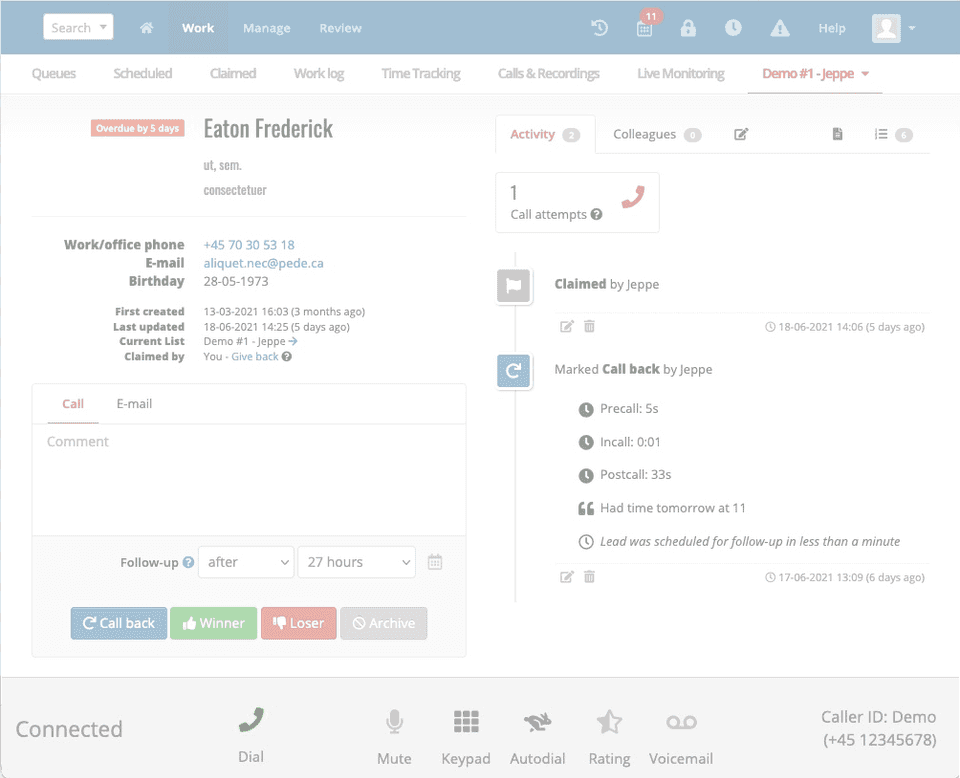
Look for the qualities of a winning closer.
Enough about skills. They're super important, but so is having the right character qualities that can carry an SDR and their skill set through thick and thin for years.
Eagerness to grow and improve.
The learning curve for being an SDR is fast—and it's steep too. Even if you're an experienced sales manager, it's going to be a challenge to train and coach your new reps. So the SDR needs to have a natural thirst for learning about their chosen industry and company.
Initiative and risk-taking.
SDRs are on the front lines, responsible for reaching out to new prospects. This includes taking on cold outreach without any guidance from a manager first. So they need to be comfortable with learning new skills, creating their own guidelines, and following or even creating their own process.
Positive attitude and eagerness to help others succeed.
SDRs are part of a bigger team dedicated to bringing in prospective customers, closing them into paying clients, upselling them on additional services, and marketing them your company's best offers. Therefore, SDRs need to be positive team players who are also driven to succeed themselves.
Respectful
Your SDR should be respectful and treat each prospect with integrity since they’re going to be working with potential customers all day every day. SDRs are often the first point of contact for clients; thus, you want to ensure that their attitude gives the right first impression of your company to the buyer.
Respect is also needed internally, as the SDR is a member of a greater sales team. A successful sales department needs dedicated SDRs that can engage respectfully with other workers in the sales pipeline.
Resilient & Tough
Working with clients is not easy. Yes, the customer is always right, but some can be downright difficult.
SDRs are also faced with many ‘no’s in just one day. On top of their many responsibilities, the job can be exceptionally challenging.
Thus, resilience and grit are good qualities of an SDR to overcome obstacles, learn from mistakes, and find the motivation to work persistently.
Adaptable
The sales industry is an ever-changing field that requires shifts in sales techniques as times change. SDRs must adapt to changes, different customers, different working routines, and more.
Therefore, the SDR that moves with the change, instead of freezing when faced with new work conditions, is the kind that a business benefits from.
Coachable & Competitive
To ensure that your SDR will adapt and grow, you need to see that they’re motivated to advance their skills, learn from their mistakes, accept criticism, and do better.
There’s a fine line between being confident and being open to feedback - the best SDRs will be able to strike that balance.
Creativity & Curiosity
Last but not least, great SDRs need a little spunk - a spark of creativity and curiosity that drives them to try innovative sales techniques.
Having SDRs with creative problem-solving skills, and that is resourceful with their work, can enhance efficiency and improve prospecting. For example, they might take the time to properly research the personal aspects of a prospect and integrate their discoveries into their communication.
How to write a sales development rep job description
When it's time to hire your kickass SDR, you need to entice them with your job description. Consider it a pitch for why they should come work with you.
A good job description will make the right candidate feel like it was written forthem. We’ll share a copy-pastable example that you can tweak to perfection for your own SDR job application throughout each sub-section.
So, what do you include in the job application description?
1. The job description
Put simply, you want to summarize what the job is all about in a paragraph (or two). Now there's a couple of things you must remember to mention:
- Company culture: your core values should align with the employee's fundamental personality too. The right candidates will be more attracted to your application, and you'll both more likely feel like a "click" during the interview.
- Your expectations: Well? What kind of person do you want onboard? What traits and skills are you looking for in an ideal candidate? Don't go overboard with this since you'll have a subsection in your job description to talk about it more.
- Their incentive (other than pay) (ex. How you can help them grow).
At [CompanyX], we recognize that a successful sales team is essential to growth. That's why we're looking for a qualified sales development representative (SDR) who can discover and screen prospective clients that could profit from our offerings.
Ideal SDRs have a solid grasp of the sales process and excel at researching leads, beginning new relationships, and setting up sales closers for success as the first line of contact with prospects. You'll need to be a quick study with excellent communication abilities and effectively present our services.
Every possible client is an opportunity for you to improve top-line revenue growth, client acquisition rates, and profitability.
2. Objectives of this role
Here you add a more structured and precise list of core objectives or goals that you'd like your future sales development rep to work towards and accomplish through their day-to-day.
- Promote our company's products and services, starting with a thorough understanding and concluding with consumer research to identify how we can satisfy their needs
- Find and nurture warm prospects to generate leads and develop relationships
- Establish a pipeline of interested prospects and engage sales executives for the next steps
- Improve the company's lead generation playbook by studying best practices
3. Daily and Monthly Responsibilities
Speaking of day-to-day, what exactly are the daily tasks and responsibilities that will help attain the overall objectives listed in step 2?
- Using Myphoner, cold calling, and email to generate new sales opportunities
- Identify prospects' needs and recommend appropriate products/services
- Establish a long-term trusting relationship with prospects to qualify leads for sales
- Proactively seek new business opportunities in the marketplace
- Arrange meetings or phone calls between (prospective) customers and sales representatives
- Report weekly, monthly, and quarterly sales results to the sales manager
4. Required Skills & Qualifications
Here you can clear up the required qualifications and education. Proper training and learning are mandatory for any job to be completed properly. Listing your expectations here will weed out unfit candidates.
- Five years of relevant work experience or at least a bachelor's degree
- Sales experience of at least two to three years, with a record of exceeding lead targets
- Excellent phone and email communication skills
- A proven ability to solve problems creatively and analytically
- Motivated and capable of moving up in a sales organization
And there you have it—the bare bones of a standard job description template for hiring a sales development representative. You can just copy-paste the italicized examples to create your own description.
What does an SDR earn?
According to builtin.com, the average base salary for a sales development representative is $56,794 a year. Employees also have the potential to increase this amount via bonuses, commissions, and profit sharing.
Experience plays an integral role in SDR earnings. Graduates and undergraduates can expect a salary that’s below average due to their lack of knowledge. Whereas senior SDRs can negotiate and leverage a higher base salary.
5 productive sales tools to couple with your new SDR
It's no secret that being a sales development rep can be a tedious job. If you hire the right person with all the skills and qualities mentioned above, you're off to a fantastic start.
But what if you could supercharge things to another level? Reel in sales even faster? SaaS tools will not only make your SDR's job easier but also improve and extend their impact. It's the era of SaaS, and here are six useful tools you can arm your SDR hire with today.
1. Myphoner

With Myphoner, salespeople can easily manage their prospects, follow up, and convert leads. Whether it's cold calling, warm calling, meeting booking, inside sales, or any other type of outreach work, following up is the name of the game. Myphoner provides a full range of solutions to help your sales staff get the job done, including:
- Integrated power dialer - your SDR can spend less time dialing and more time winning a prospect's heart by dialing numbers on autopilot with a bunch of management control options on this cold calling tool.
- Pre-defined, personalized emails - sending post-call emails are a great way to keep your proposal fresh in a prospect's mind and gradually move further along the sales funnel. By setting these up beforehand, your SDR won't be running around sending out poor-quality, rushed emails.
- Outbound campaign management & reporting - this is a great feature for project managers because you get an accurate, quantifiable report on your sales and SDRs or other agents' performance. Using the numbers, you can identify and work on areas of improvement (e.g., provide training to employees).
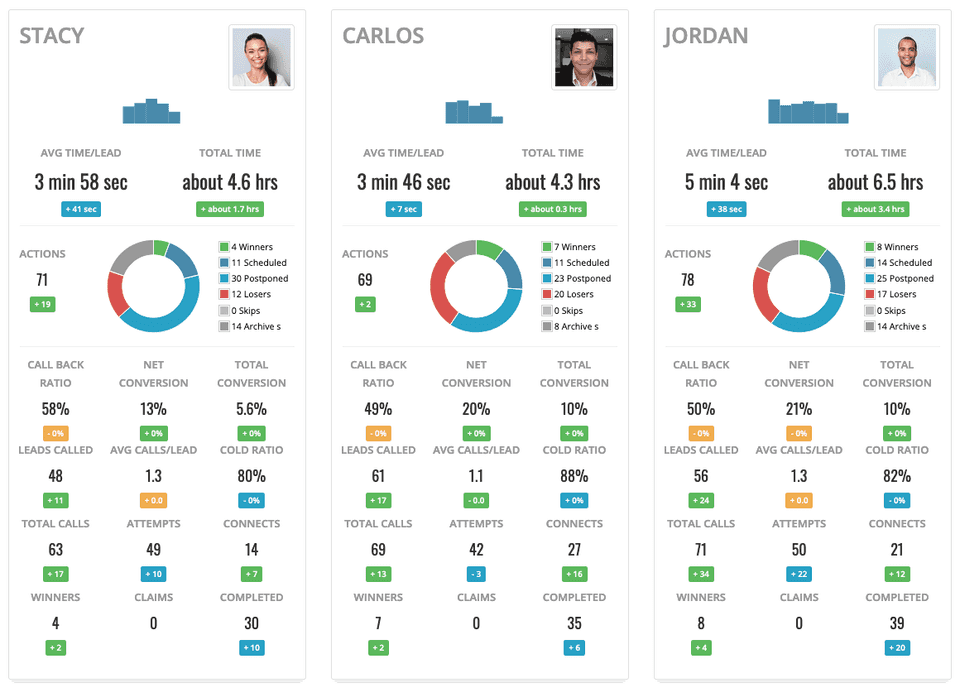
2. Calendly
Calendly is a fantastic tool to use as it syncs your calendar with your customers'. No one wants to schedule a meeting and then find out that you're double-booked, right? The Meeting Planner feature is great for SDRs who are looking to set up meetings with prospects. All your SDR has to do is share their Calendly link, from where prospects can choose a convenient time to meet.
Since it syncs up with all calendars (not just Google), Calendly is an excellent choice for any business.
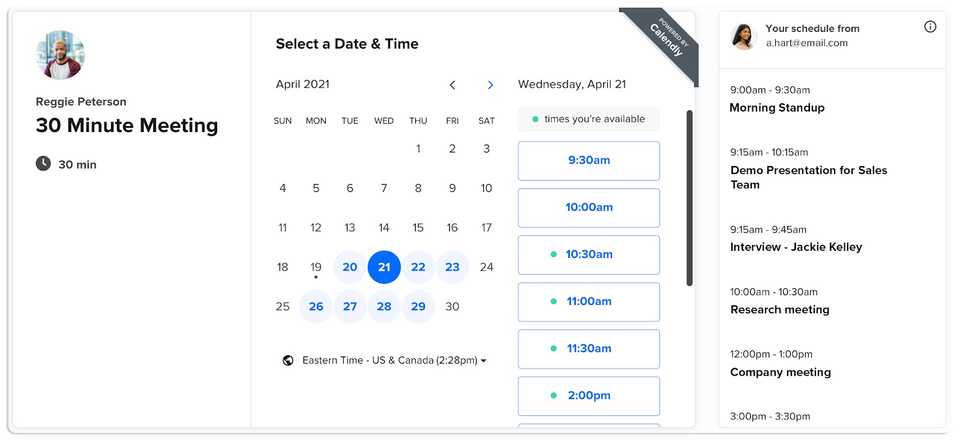
3. SumoMe
You can easily install SumoMe on your website to drive more traffic, capture leads, create shareable content, and boost sales. Additionally, these tools are easy to implement since it's simply a case of embedding the app on featuring various apps. SumoMe can be used to aid your SDR in their daily tasks by offering features like:
- List builder - the list builder app is an excellent choice for anyone looking to grow their email list by incorporating popups on their website. Your SDRs will appreciate this if they're tasked with growing the company's newsletter subscription.
- Heatmaps - these give you an insight into how people navigate your website and what catches their attention so that you can optimize areas that aren't working well. This way, if your sales development rep reaches out with a CTA to a landing page or has to point someone to the website for more information, they'll be able to point to an optimized web page more likely to convert.
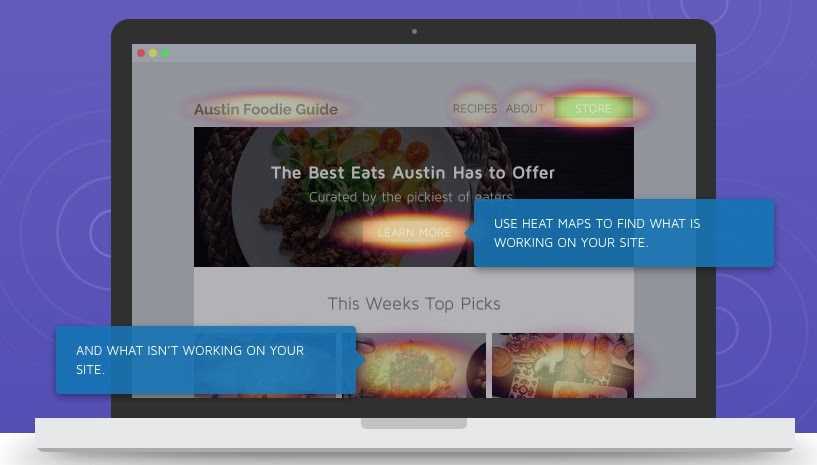
4. InVideo
Finding and engaging the right audience is a tough task, but InVideo makes this much simpler for your SDRs. They'll be able to quickly create personalized video content from 1000s of stock media on an intuitive user interface. You can even add licensed music, animated text, 4k video and download it all watermark-free with their paid plans.
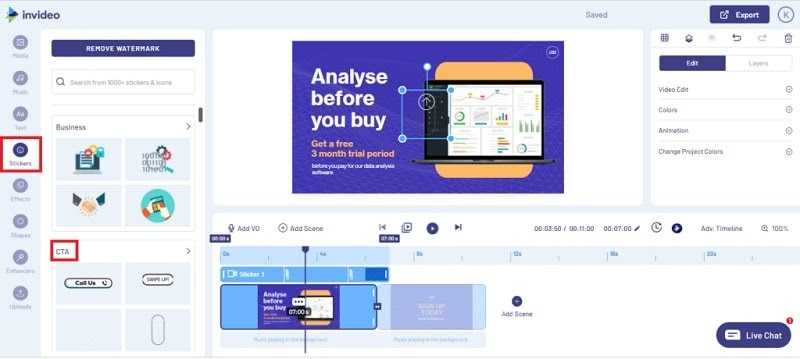
5. Google Meet
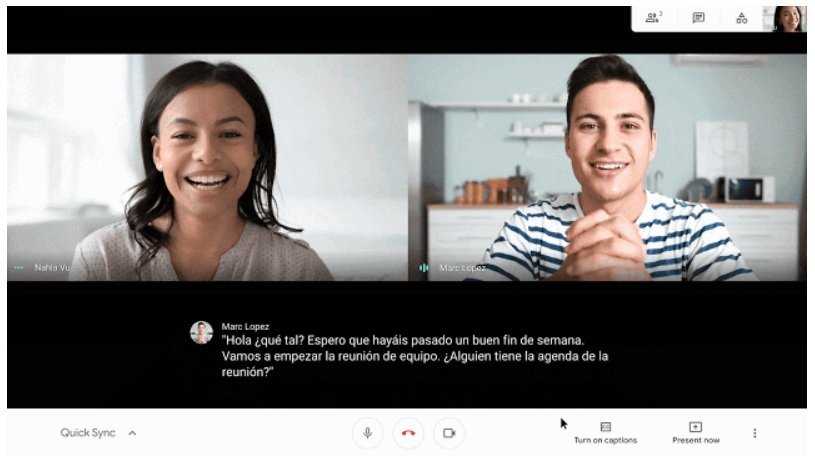
Google Meet is an excellent choice for SDRs looking to stay in touch face-to-face with their managers and prospects.
Though it offers the standard features like brush-up, background green-screen, screen sharing, chat, group calls, and more, the other video conferencing apps like Zoom are not as well integrated with calendars.
Most businesses and professionals operate on Google calendar. And scheduling a Google meet through the calendar is ridiculously simple. Your sales reps will love chatting with the right candidates over an easy-made video call.
Another perk is that Google seamlessly integrates other powerful features like Google Translate into Meet. This way, your SDR can communicate easier with individuals who may not speak English as a first language, if need be.
Arm your next sales development rep with Myphoner
Sales development representatives can completely transform how your sales team engages with prospects. A great SDR paired with industry-leading outreach and sales management tools can make leads feel welcome by engaging with them, understanding their preferences, and tailoring their sales experience accordingly.
An effective SDR will also build trust in your business and improve customer relationships by offering articulate, professional, and informed service. They strike a balance between research, sales, and communication. By doing so, they make the world of sales much easier for everybody around them.
Give your SDR the best possible start


Written by
Jeppe Liisberg
I'm an entrepreneur and web developer. I've built or helped build a handful of startups.
I strongly believe in dedicated software that solves one task, but solves it really well. During my experience as an internet entrepreneur, I never found that software for cold calling, so that's why I decided to build Myphoner.
I'm very proud of what Myphoner has become, and I'm dedicated to doing everything I can to make it stay a success. That's why I greet all new customers personally and always read and reply to the feedback I get.
Related articles

Industry Related
8 Techniques On How To Better Handle Your Next Inbound Sales Calls
We take you through different ways to handle inbound sales calls effectively, giving you further confidence to close the deal.
August 18, 2022

Industry Related
Build a better SaaS business with cold calling
Cold calling provides a great opportunity for SaaS businesses to get product market fit & grow their client base.
August 9, 2022

Industry Related
The Ultimate Guide on Sales and Operations Planning
Learn why sales and operations planning is vital for any sales team & how to effectively implement planning within your organization.
July 28, 2022